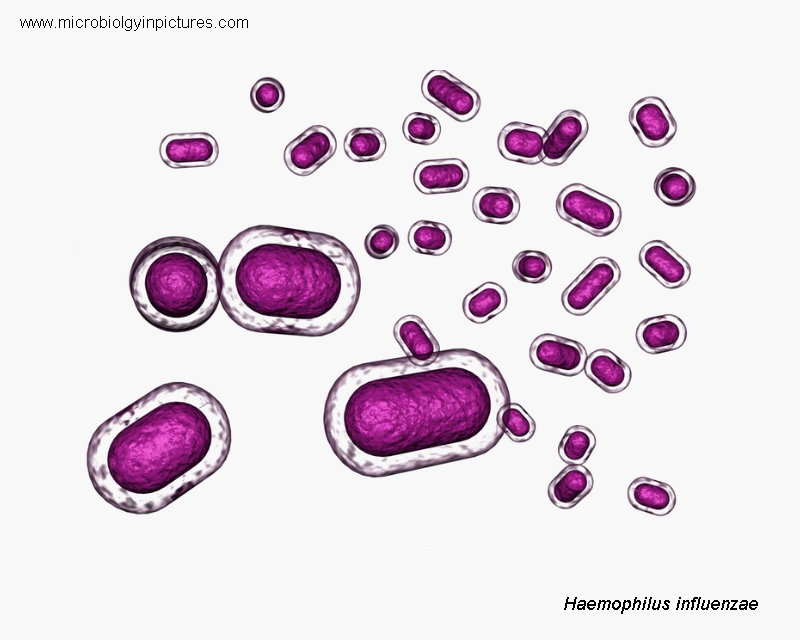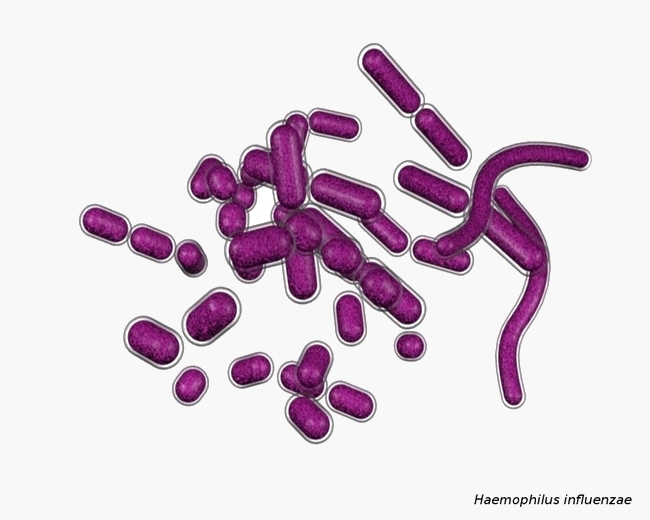
Haemophilus influenzae is a nonmotile, Gram-negative, rod-shaped bacterium. Organisms grown on agar ptales (or seen in sputum) usually show a highly regular shape. The rounded ends of short (0.5-1.5 μm) bacilli make many appear round - hence the term coccobacilli. Haemophilus influenzae may have a polysaccharide capsule (e.g., type b capsule is made up of a polymer of ribose, ribitol and phosphate). Encapsulated strains were classified on the basis of their distinct capsular antigens. There are six generally recognized types of encapsulated Haemophilus influenzae: a, b, c, d, e, and f. These surface polysaccharides are strongly associated with virulence, particularly in type b H. influenzae (Hib), which is responsible for most cases of serious infection.

In cerebrospinal fluid some of the cell may be elongated to several times their usual length (pleomorphic).
